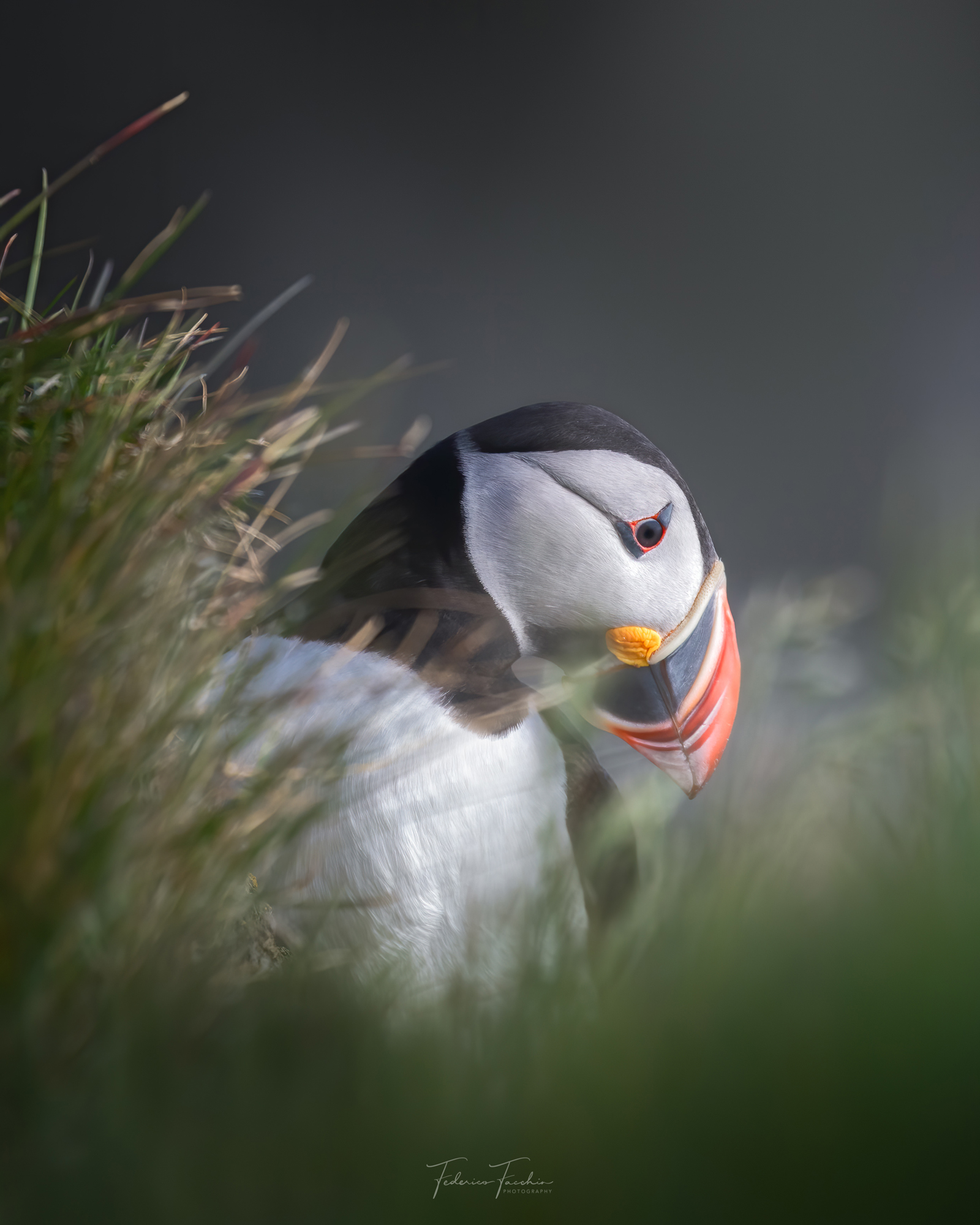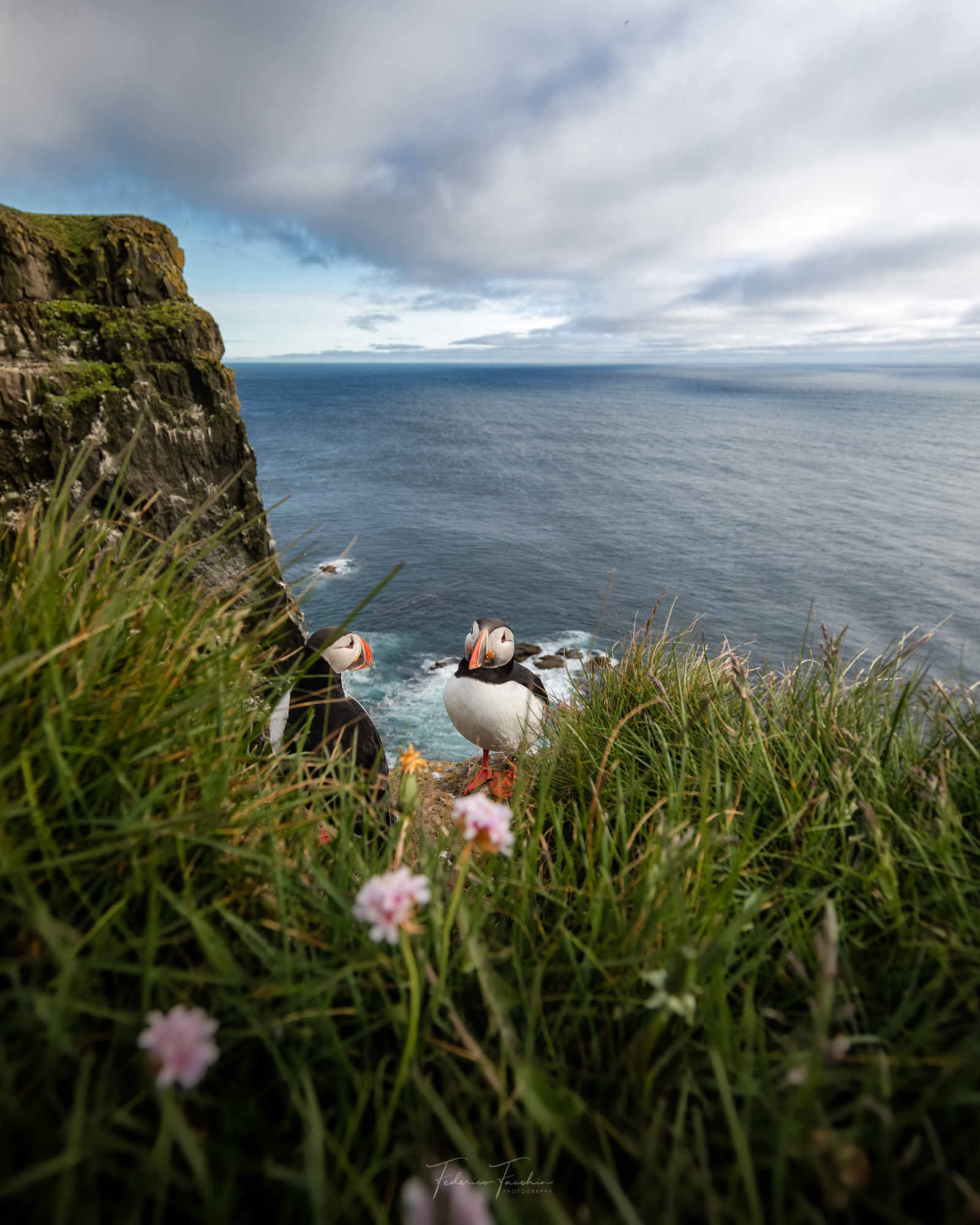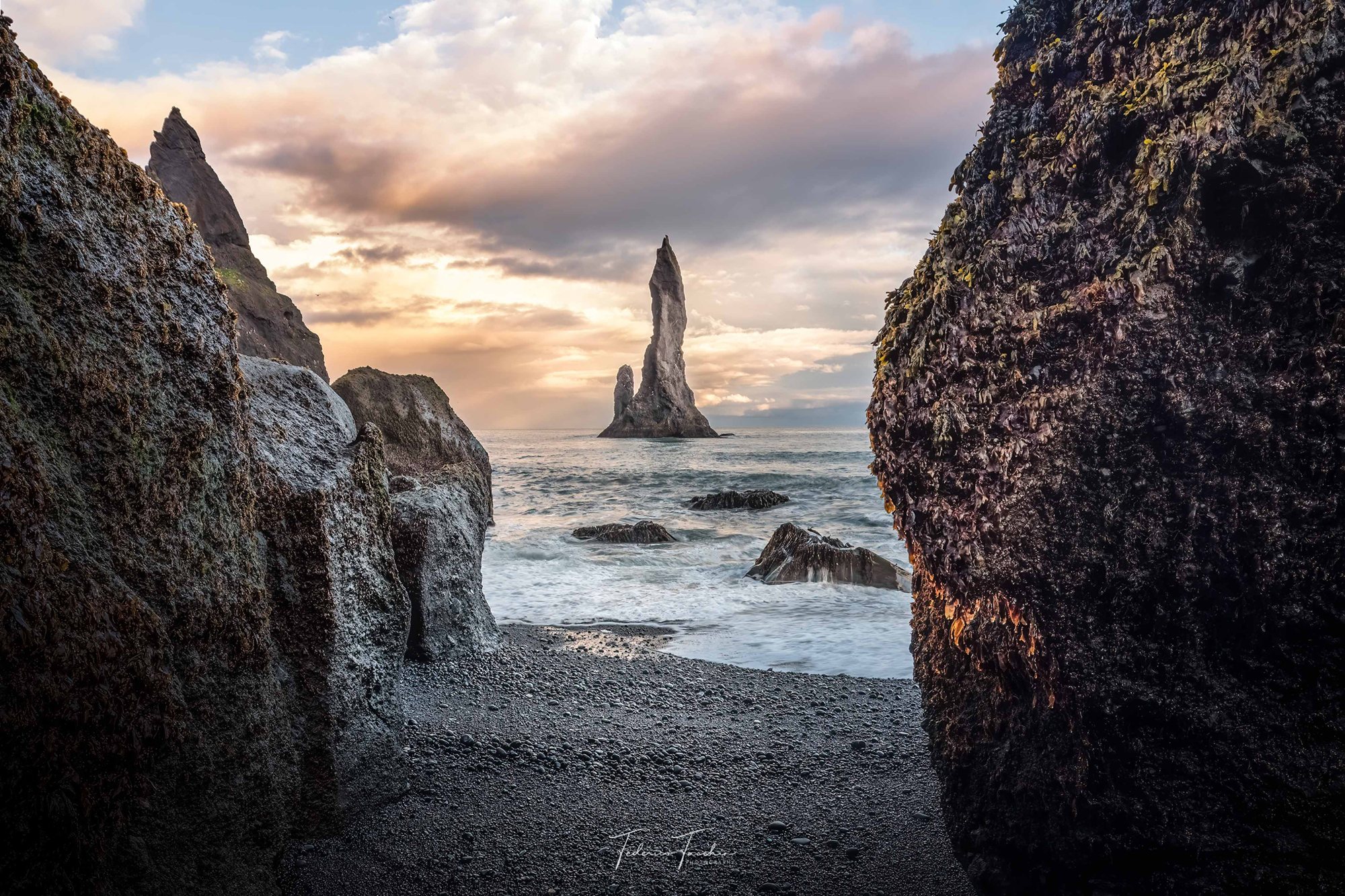Puffins have an innate ability to put a smile on anyone’s face when they catch a glimpse of them for the very first time. This was the case with me, when I came face-to-face with these stunning birds.
Their large face, classy elegant black-and-white tuxedo, and bright orange feet perfectly combine elegance, grace and fondness.
In 2018, I was working as a naturalist, whale watching and bird watching guide in Iceland. Sailing from the Old Harbour of Reykjavik, our boat would head out to the little island of Engey. Thousands of Atlantic puffins nest there every summer, raising a single chick before migrating away from Iceland during the wintertime.
Due to its lack of natural predators, Iceland is particularly convenient for puffins, and that is why so many of them choose this little rock in the north of the Atlantic Ocean as nesting grounds every year. For this reason, they have become a symbol of the country, with thousands of little puffin-shaped souvenirs lining the shops of Reykjavik (the capital).
However, overfishing, pollution, climate change and even hunting have led to a population decline by 45.6% between 2003 and 2017 (South Iceland Nature Research Center). Having spent two years on the island, I witnessed the challenges that these seabirds are exposed to firsthand.


IMAGE LEFT: The Atlantic Puffin (Fratercula arctica) is the only puffin native to the Atlantic Ocean. | © Federico Facchin
IMAGE RIGHT: Puffins mate for life and return to the same cliff every year to nest and raise a single chick. | © Federico Facchin
Discovering the Cliffs of Iceland
Iceland is a cold and hostile land. Yet, it is one of the most beautiful countries I have ever visited and lived in. Nowhere else in the world have I been able to drive for hours without seeing any anthropological interference with nature.
The Westfjords in the North-West are probably one of the most remote areas of the country, and the time I spent visiting Latrabjarg was an unforgettable experience.
The bird-life on these cliffs is jaw-dropping. Home to an unfathomable number of seabirds, this cliff is deemed as one of the most spectacular seabird cliffs in the world. I spent hours enjoying the good company of these adorable birds, lying in the wet grass close to the edge of the cliff. I forgot all about the howling wind and freezing temperatures, as I waited for sunset. The puffins were absolutely fearless and seemingly unruffled by my presence.
Being able to approach wild animals at such close proximity is rare and I have been particularly lucky that those puffins posed just several meters away from me. I developed a personal connection with these seabirds, which reinforced my passion to protect them, using my photography to bring their beauty to a wider audience.



IMAGES IN ORDER OF APPEARANCE: Iceland is a cold and hostile land. Yet, it is one of the most beautiful countries I have ever visited and lived in (top). | Males arrive at the nesting site before their female partner (bottom). | © Federico Facchin
A Little Lecture on Iceland’s Puffins
The Atlantic Puffin (Fratercula arctica) is the only puffin native to the Atlantic Ocean. Its two related species – the Tufted Puffin and the Horned Puffin – can be found in the North Eastern Pacific. Puffins breed in many North Atlantic costs, including Norway and as far south as the Scottish cliffs. However, the majority (60% percent) return to Iceland every year to breed, amounting to approximately 2 million breeding pairs.
For 8 months of the year, puffins are nowhere to be found in Iceland. The majority spend the winter in the open ocean in the vicinity of Greenland. Some individuals migrate all the way down to the Azores. A few brave individuals have also been found wintering in the Mediterranean Sea!


IMAGE LEFT: Large face, classy elegant black-and-white tuxedo, bright orange feet: thanks to their beauty and popularity, puffins have become the perfect symbol of the country. | © Federico Facchin
IMAGE RIGHT: The bright orange and yellow colors of the puffin perfectly match the vibrant green of the Icelandic summers. | © Federico Facchin
Puffins mate for life. Once a couple has been formed, they will meet again every year in the same nesting spot, laying one egg per year. On average, puffins can live up to 25 years, hence the bond between breeding pairs is very strong. Both parents take care of the egg, taking turns to hunt for fish (e.g. silverfish and sand eels) out at sea for their chick, also called a “puffling”.
While hunting, puffins can dive up to 60 meters deep into the water. Their beaks are hinged at the back and both the beak and tongue have rough edges. This enables them to grip onto many fish during each dive. In fact, a puffin might hold up to 10 sand eels in its beak before returning to the nest. One puffin in Britain was even recorded holding 62 fish at once!
For a 20 Centimetre tall land bird, puffins have very small wings for their body size. Therefore, they must flap their wings up to 400 times per minute to stay afloat. Yet, once airborne, they can reach speeds of 80 Kilometers per hour. When landing, they can be quite awkward, tumbling a little bit before they find their balance. This is what makes them all the more charming to observe.

IMAGE ABOVE: A puffin hitting the hay during the summer night in Iceland. | © Federico Facchin
Changing Climate & Marine Pollution
While Atlantic Puffins are currently not considered an endangered species, warming ocean temperatures have reduced puffin numbers tremendously fast. Over the past 20 years, the population has halved in Iceland. According to the South Iceland Nature Research Center, food is becoming increasingly limited as warming sea temperatures affect the availability of prey. The lack of food during breeding season means that only a very low number of chicks survive until maturity (University of Oxford). Should this continue over an extended period of time, experts warn that puffin populations may not be able to bounce back.
Aside from climate change, marine pollution is another general threat for the seabirds. On one hand, the increasing contamination by heavy metals is causing puffin chicks to become poisoned by fish that they eat. On the other hand, plastic pollution and micro-plastics cause malnutrition, starvation, entanglement and interior ruptures in birds that mistake it for food. All of these factors are making it harder for pufflings to grow healthy and strong enough to survive their first migration.

IMAGE ABOVE: Several threats that puffins are facing include pollution and climate change. | © Federico Facchin
A Hunting Tradition
Besides environmental factors, Atlantic Puffin populations are also affected by other threats. Traditionally, puffins have been hunted for food in Iceland for centuries and still continue to be. In the past, they served as a valuable food source, especially during more difficult times in Iceland when food was scarce.
Nowadays, there is no quota for the number of puffins that may be hunted on the island. Instead, the dedicated “season” (regulated by hunting clubs) runs from mid-July to the end of the migration. Hunters claim to only hunt for two-year-old puffins that have not reached maturity. However, it is not uncommon to forgo checking the “kennitala” (Icelandic identification number) for a puffin that has been caught.

IMAGE ABOVE: Puffins’ beaks are hinged at the back and both the beak and tongue have rough edges. This enables them to grip onto many fish during each dive. In fact, a puffin might hold up to 10 sand eels in its beak before returning to the nest. | © Federico Facchin
While puffin hunting continues to take place in Iceland, the practice has declined in recent years. This is predominantly due to the severe decline in puffin populations and the inability for new chicks to survive. Additionally, while some Icelanders still eat puffin meat, it is becoming uncommon practice. Instead, puffin meat serves as a tourist attraction for those looking for an “exotic” meal.
Not all the tourists who visit Iceland have the chance to see a puffin. The seasonality of the seabirds means that many tourists miss out on seeing these incredible species. It also affects those people scared of heights or susceptible to sea sickness.
While puffin hunting continues to take place in Iceland, the practice has declined in recent years. This is due to the severe decline in puffin populations and the inability for new chicks to survive.
That being said, most of the travellers that I interacted with are willing to go the extra mile to see puffins! And, from my experience, those who succeed would not ask someone to shoot and cook a puffin for them. I have actually seen tears after lecturing on puffin hunting. I believe it is the lack of connection with the birds that leads to a puffin-based menu and puffin meat customers.

IMAGE ABOVE: I believe it is my duty to show the beauty and fragility of our environment to a broader audience. | © Federico Facchin
Nature is Interconnected
It is impossible to show the Icelandic puffin in their natural environment to 7.8 Billion people.
But so is providing puffin meat for everyone to taste.
Whether it can be argued that the local hunt is traditional and sustainable, more than 2 million tourists used to travel Iceland (before Covid-19 spread). However, nowadays the exchange of experiences is simpler than ever through photos, videos and articles that can be shared online and reach every corner of the globe.
I have been privileged to travel and see a little portion of the world. I believe it is my duty to share these experiences, to show the beauty and fragility of our environment and its species to a broader audience. If I can convince one person to share my fascination for the Atlantic Puffin, instead of consuming them as a meal, I consider my work done.
The world is huge, beautiful and diverse. We share it with almost nine million living species.
It is not ours alone. It belongs to everyone.
Follow Federico Facchin on Social Media

Written by
Federico Facchin
Federico Facchin is a marine biologist, science teacher, dive master and naturalist. Born in Italy, Federico’s passion for nature was fuelled by the surrounding environments throughout his youth. Growing up around the forests and fresh waters of the lakes and rivers in the Italian Dolomites instilled in him a deep love and curiosity for surrounding nature and wildlife, especially the hidden life under the water's surface.
Based in Italy | www.federicofacchin.com

Edited by
Lana Tannir
Lana Tannir is the founder and editor-in-chief of Creatives for Conservation. A professional landscape and wildlife filmmaker and photographer, she specializes in nature conservation and animal welfare projects. Through her stories, she strives to promote global change by raising awareness, advancing education and inspiring people to act.
Based in Germany | www.lana-tannir.com
Join the Journey
Subscribe to receive more stories about nature and wildlife conservation.
Discover Our Stories
Explore more inspiring stories written by our creative conservationists.

Amazon of the North
The Great Bear Rainforest faces many environmental threats. Deforestation of the temperate rainforests, the construction of fish farms and pipelines, commercial fishing of herring in spring, and trophy hunting are just some of them. Photographer and cinematographer, Niklas Weber, documents the challenges of this ecosystem and examines potential solutions.

Conservation of European Forests
European forest ecosystems face various threats. Many of them originate from the management and exploitation systems in the past. However, numerous solutions are being applied in the current day to establish a balance between forestry and biodiversity. Ecologist and photographer Jeroen van Wijk reveals the challenges and solutions to conserve these forests.

Saving Pangolins with Wild & Free
As the world’s most trafficked animal, the pangolin is a victim of horrendous injustice and cruelty. A pangolin is poached every 5 minutes, while 125,000 pangolins are illegally traded each year. Staggered by this statistic, Geraldine Morelli supports pangolin conservation, rehabilitation and release in Asia and Africa with her UK-based charity Wild & Free.
